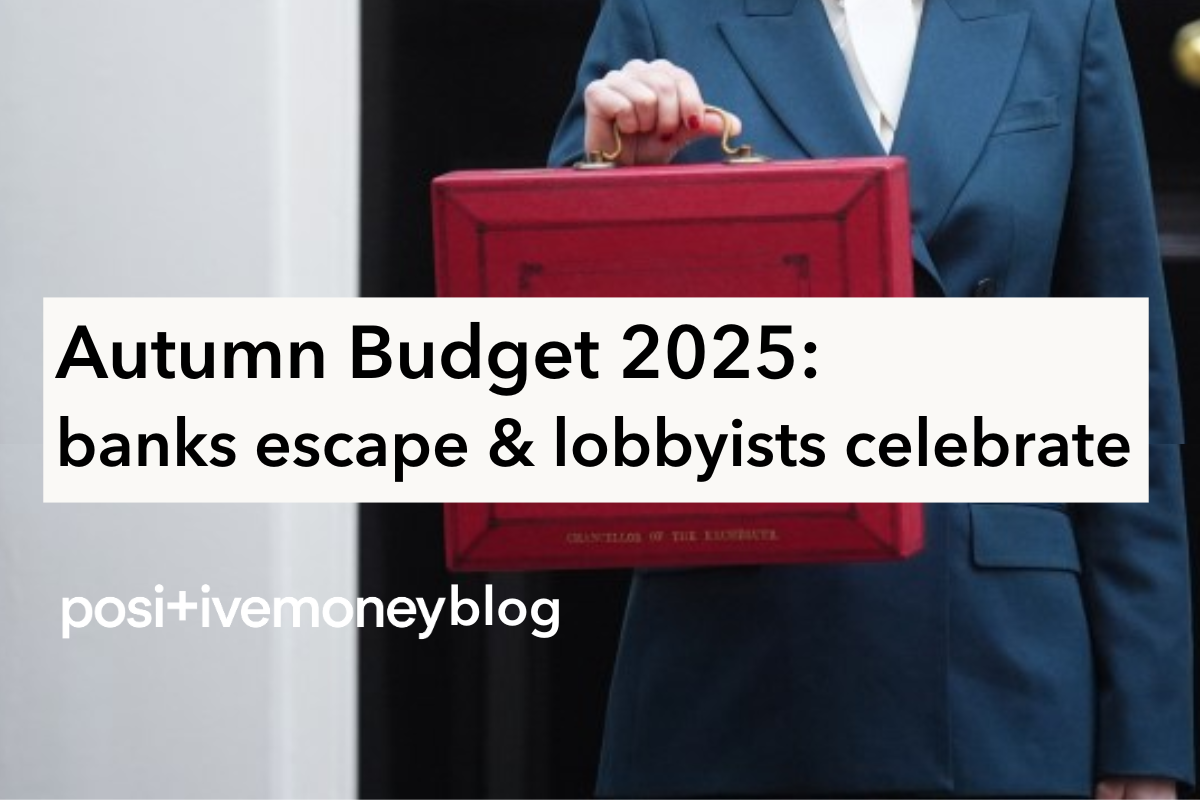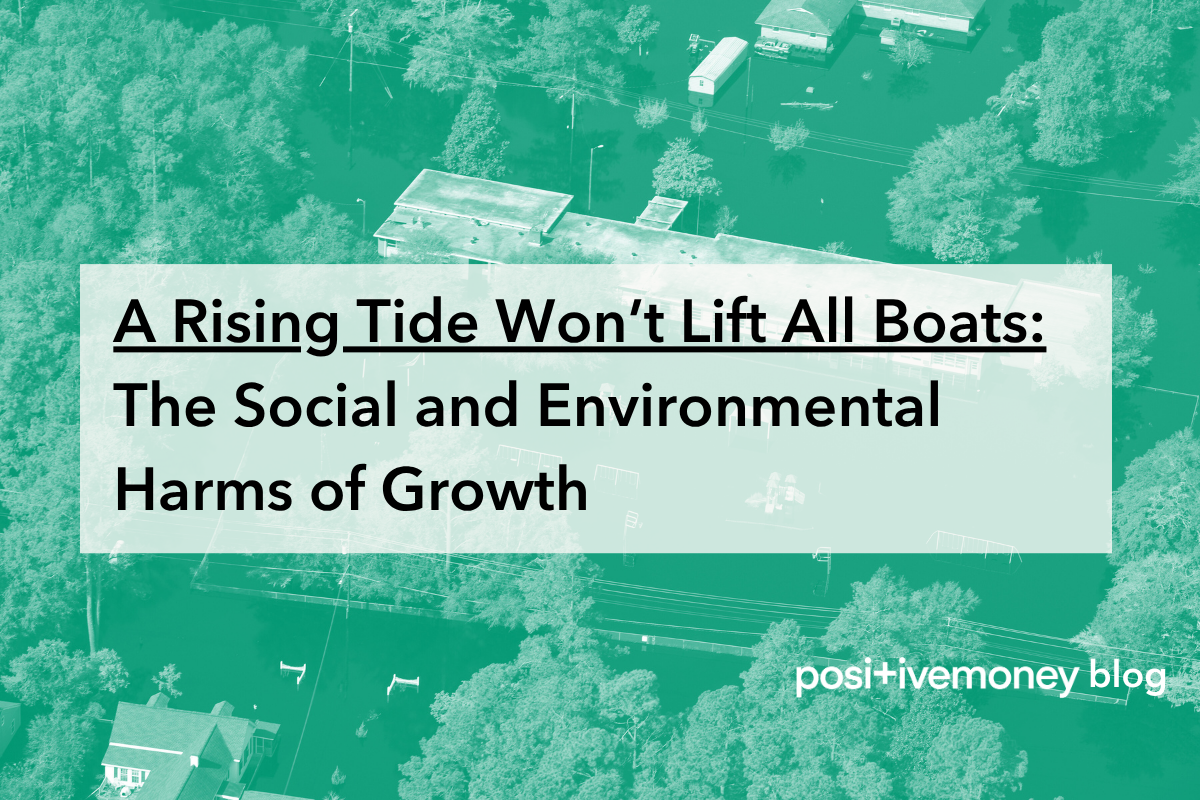
Finance and DemocracyUK
26 November 2025
The UK government describes economic growth as its ‘number one mission’, and many political commentators take for granted that growth is always a good thing - but they’re wrong . This article kicks off a three-part series offering a critical analysis of growth, by looking at its impact on ecological systems and inequality.
Since coming to power in July 2024, the Labour government has gone to great lengths to communicate the centrality of economic growth in its plans for the country. ‘Economic growth’ in this context is shorthand for increasing Gross Domestic Product (GDP), which itself measures the total value of all economic activity within a given territory, calculated through a number of methods. Economic growth has frequently been referred to by the government as its “number one mission”, as well as an “obsession”. Under this mission, it is targeting the highest sustained growth in the G7 by the end of the parliament.
So the government was understandably disappointed when the Bank of England halved its 2025 growth forecast for the UK to 0.75% in February. By contrast, the average annual GDP growth in the UK between 1956 and 2024 was 2.32%. However, the government has also been keen to stress that its plans for growth are long-termist in nature, meaning that impacts won’t materialise rapidly.
So often the subject of consensus support across the political spectrum, the media, and much of civil society, economic growth as a policy objective receives insufficient scrutiny in mainstream political debates. Given the extent to which the current UK government has privileged growth within its narrative of change, such scrutiny has never been more crucial. For a number of reasons, a policy agenda centred around growth is ill-equipped to address the intensifying social and ecological challenges of our time.
This blog kicks off a three-part series offering a critical analysis of economic growth as an objective of government policy, beginning by considering some of the social and environmental harms caused by growth. Subsequent pieces will explore the decreasing feasibility of growth in the current economic context, and the current UK government’s confused model of growth.
The Planetary Boundaries framework, developed by the Stockholm Resilience Centre at Stockholm University in 2009, maps out the nine key Earth system processes whose stability we rely upon in order to maintain a safe and prosperous human society. The framework is important because, so much of the time, the public conversation on the environment is focused only on carbon emissions and climate change. Figure 1 is the most recent update, with the orange and red colours indicating where the ‘safe operating space’ for humanity has been transgressed. In 2023, the Centre’s researchers found that six out of the nine boundaries had been crossed, placing these Earth processes in a dangerously unstable condition.
Figure 1: The 2023 update to the Planetary boundaries framework. Source: Azote for Stockholm Resilience Centre, based on analysis in Richardson et al 2023.
Scientific research has documented this human damage to ecological systems since at least the mid-twentieth century. An area of knowledge that has developed rapidly in the twenty-first century however is that of the relationship between damage to ecological systems and economic growth. Figure 2 shows the relationship between the change in global GDP and the change in global material footprint across the years 1990-2013. Material footprint refers to the “total amount of raw materials extracted to meet final consumption demands”.
What the graph shows is a very close relationship between the two variables; increasing GDP has come hand in hand with increasing extraction of materials, and from that, increasing pressure on ecological systems. It must be noted also that breaking down global material footprint by country reveals a huge skew towards high income nations, who claim far more than their fair share of the total globally sustainable level of resource use.
Figure 2: Global GDP and material footprint 1990-2013. Source: Hickel and Kallis (2018)
Advocates of so-called ‘green growth’ argue that investment in the right industries and technological developments will allow for a decoupling of economic growth from material extraction and environmental pressures. However, as economists Jason Hickel and Giorgos Kallis argue in a 2018 paper, there is so far “no empirical evidence that absolute decoupling from resource use can be achieved on a global scale against a background of continued economic growth”. Decoupling falls down for numerous reasons. The following example can help show why.
One area which is often highlighted as evidence of economic growth being decoupled from environmental degradation is the reduction in many countries’ carbon emissions in recent years, particularly in the Global North. However, emissions reductions are not happening at anywhere near the required speed or scale, and a context of continuous economic growth makes such large reductions all the more difficult to achieve. Furthermore, decreasing emissions in some countries (even at sufficient scale) means little if global emissions continue to rise. It is important to remember here that one component of Global North countries’ declining emissions is the outsourcing of high-carbon industries to the global South.
At the same time, taking action to ease growing pressure on one planetary boundary is insufficient if the pressures are simply shifted onto another. For example, national and international plans for the decarbonisation of energy systems are often built on the prospect of lower carbon emissions from fossil fuels being paired with large increases in mining of materials to produce renewable energy technologies, which ratchets up damage to other critical ecological systems, as well as perpetuating green colonialism and other social conflicts.
In summary, a kind of economic growth that would be compatible with addressing ecological crisis at a global scale would need to be absolutely decoupled from damage to all planetary boundaries, in all places, and decoupling at a sufficient speed to avoid tipping points. As there is so far no empirical evidence of this kind of growth, governmental agendas centred around economic growth currently stand in tension with efforts to mitigate the ongoing breakdown in critical ecological systems.
Alongside the environmental dimension, the macro-scale social impacts of growth are also important to consider. Figure 3, from a report by the international poverty charity Oxfam, shows how new wealth (i.e. growth) from 2012-2021 was distributed amongst global income percentiles. For context, global GDP grew around 130% in this time. However, the richest 1% of the global population gained around 55% of the total new wealth created in this nine year period, with the bottom 90% gaining only around 13%.
Figure 5: Percentage of new wealth gained by income percentile, 2012-2021. Source: Oxfam (2023).
At the national scale, governments like to frame economic growth as a rising tide to lift all boats. The implication is that when new wealth is generated within a country, everyone in that country feels the benefit, and they do so in a fairly uniform manner. However, in reality, this is not how economic growth operates. To give one example, the economists Emmanuel Saez, Thomas Piketty, and Gabriel Zucman have conducted research using tax data on the distribution of gains from economic growth across income groups in the United States. Their findings, displayed in figure 6, portray a remarkably similar pattern to that witnessed at the global level. The red line shows the average change in pre-tax incomes across income percentiles over the period 1980-2014, while the blue line shows the average change after accounting for tax (including credits), welfare programmes, and employer benefits. All data is adjusted for inflation.
The incomes of the bottom 85% of earners grew below the average national rate of around 1.4% over the 34-year period, with the bottom 20% even seeing a fall in pre-tax incomes. Meanwhile, only the top 10% of earners’ incomes rose above the average rate, with income gains rising exponentially within the top 1%, much like the global picture detailed above. The research offers an indication then that within economies that do not have strong equity-centered policies in place - such as progressive tax regimes and democratised ownership structures - economic growth exacerbates inequality.
Figure 6: Average annual income growth in the United States by income percentile, 1980-2014. Source: Piketty, Saez and Zucman (2017)
Figure 7 displays the labour share of income in the UK, over the period 1948-2023, which is the proportion of GDP that is received by workers, as opposed to that received by the owners of capital and assets. It therefore provides another noteworthy indication of the extent to which different social constituencies in an economy benefit from growth. The different lines on the chart represent different methods of calculating the labour share of income.
Figure 7: Labour share of income in UK, 1948-2023. Source: ONS (2024)
The UK’s GDP grew by around 600% over this time period, and yet the overall trend in the labour share of income is one of decline. There has been some rebound following a trough reached by the late nineties, although since the 2010s this has levelled off at a much lower labour share of income than was seen in the immediate post-war years. In other words, since the mid-twentieth century, the proportion of growth benefitting workers is in long term decline, which means more of the wealth generated in the UK is going to owners of capital and assets, who are already the wealthiest members of society.
These examples indicate how economic growth over past decades has contributed to growing socio-economic inequality, which in turn brings further damaging social impacts. For example, the rapidly increasing wealth of the richest in the UK over recent years has exacerbated the housing crisis and inaccessibility of home ownership to younger generations, as growing wealth is invested into property, driving up rents and house prices.
So while policy-makers are often seduced by the ‘win-win’ narrative of growth, the reality is that it maintains both winners and losers; these are just less obvious than with other policies, e.g. taxes on extreme wealth and profits. While growth solutionism remains rife in electoral politics, more and more economists, campaigners, and members of the public are recognising that growth as a central objective of economic policy in countries of the Global North is not the optimum route to addressing poverty and building a more just and equitable society.
This is the first blog in a three part series, see part 2 on the decreasing feasibility of growth in the current economic context here, and part 3 on the UK government's confused model of growth here.
Sign-up to our mailing list for regular updates, or donate to support our work to redesign our economic system for social justice and a liveable planet.
